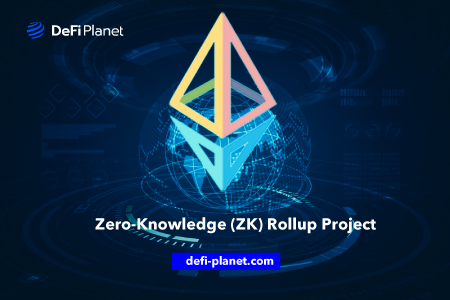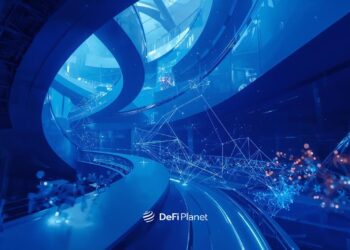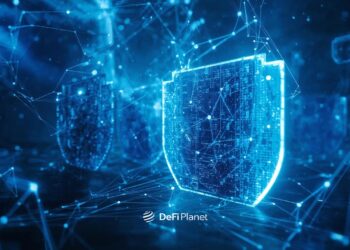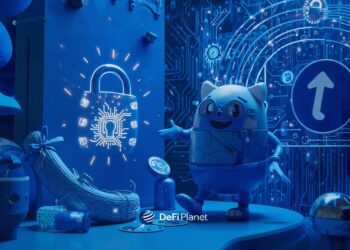The transaction fees and time required to trade on the Ethereum platform have increased due to the rapid proliferation of DeFi (decentralized finance) projects.
The typical ETH transaction fee reached an all-time high of about $40 in February 2021. This is precisely what Loopring intends to correct by offering a digital economy that gives its users complete control over their assets.
With Loopring, people no longer have to sacrifice affordability and efficiency to benefit from Ethereum’s network security.
This article comprehensively explores the Loopring Zero-Knowledge rollup project, its features, how it works, and lots more.
What is Loopring?
Loopring is an Ethereum-based protocol that aims to incentivize a global user network to run a platform that allows for the establishment of new types of crypto asset exchanges.
It is a new DeFi protocol that provides this platform using a variety of cryptocurrencies, including its own LRC token.
Loopring’s platform stands out due to its use of a more recent type of cryptography known as zero-knowledge rollups, or zkRollups, which allows exchanges built on it to avoid the slow speeds and high costs associated with decentralized exchanges on Ethereum.
Loopring claims that its exchanges can provide quicker settlements for dealers with zkRollups. Other decentralized exchanges settle trades directly on the Ethereum blockchain, whereas Loopring exchanges can perform essential computations elsewhere thanks to zkRollups.
The idea is that speed and transaction fees can be improved by reducing the number of transactions that a Loopring exchange must submit to the Ethereum network.
This differs from other decentralized exchanges in that trades must be confirmed by the Ethereum network, which can take minutes rather than seconds or milliseconds.
The Objective of Loopring
The objective of Loopring is to tackle the challenges that cryptocurrency exchange platforms are currently facing. These challenges include high energy consumption, high transaction fees, and limited scalability. It accomplishes this through the use of zero-knowledge rollups, also known as zk-Rollups.
Loopring compiles a large number of transactions into a single one.
It compares identical orders and collects them into an order ring. Ring miners then complete these orders before they cancel or expire.
These transactions are then validated by Zk-Rollups. Smart contracts then validate the orders to see if the network can complete them. If the order ring is ready, the smart contracts pay cryptocurrency and other assets to the beneficiary.
Loopring’s ZK-Rollups (Zero-Knowledge Rollups)
DEXs (such as Uniswap) frequently use AMMs to connect buyers and sellers. Liquidity pools (crowdsourced asset pools used to offer liquidity) are used in place of traditional order books in these AMM protocols. DEXs often offer lower transaction fees and support for a wider range of digital assets than centralized exchanges (CEXs) that use order books.
However, centralized exchanges continue to enjoy more liquidity and faster throughput rates than DEXs. Loopring seeks to bring the benefits of centralized exchanges to the decentralized environment by using zk-Rollups (a cutting-edge development in blockchain technology).
A zk-rollup is a Layer 2 function that interacts with the Ethereum network to increase scalability. Zk-rollups make it possible for hundreds of transactions to be combined into a single, data-light Zero-Knowledge Proof. The transactions can then be confirmed in batches on the Ethereum network. This allows for much higher transaction throughput than Ethereum can currently support alone.
The data and transactions are always stored on the Ethereum blockchain, while the zk-Rollup computation process happens off-chain. The zk-Rollup method can be integrated with DEX protocols, allowing for considerably more intricate computations and optimizations that lead to lower transaction fees and significantly increased liquidity.
In the context of the Ethereum network, the use of Zk-Rollups makes it less expensive and faster to validate a block of transactions.
This is due to the fact that there is less data involved, and a smart contract is required to validate the final, light cryptographic evidence.
Furthermore, these transactions are added to the Ethereum blockchain as call reference data, which requires significantly less processing power than retrieving data from the network.
Loopring increases efficiency throughout the Ethereum ecosystem by combining all of these services into a single, open protocol, thereby encouraging the adoption of blockchain technology.
The Process of Exchange in Loopring
The Loopring protocol uses a system of “loops” and “rings” to carry out the exchange procedures. First, whenever a user executes a trade, the system generates an order that the renowned “ring miners accept.”
To obtain the required liquidity and execute the entire order issued by the user, the ring miners are responsible for breaking down the formed order into smaller orders that are transmitted to the relays.
This looping procedure between the relays and the ring miners is repeated as many times as necessary to effectively complete the task.
When the procedure is completed, the miners are compensated for their efforts.
As stated earlier, Loopring operates as an automated market maker (AMM), creating pools that provide the liquidity needed to conduct operations in a decentralized manner. This provides users with a completely decentralized trading mechanism.
The AMM system makes it possible for Loopring to provide staking, liquidity mining, and eye-catching reward possibilities for investors’ protocol holdings within their dApp. Another feature worth mentioning is its compatibility with Web3 wallets such as Dappradar. This feature allows Ethereum users to easily exchange their tokens within Loopring.
What Sets Loopring Apart?
Loopring combines the advantages of centralized and decentralized bitcoin exchanges. Its creative application of zkRollups enables it to outperform every other decentralized exchange established on the Ethereum blockchain in terms of throughput and costs, while its non-custodial technology enhances the security of centralized exchanges.
Algorithmic traders are now able to apply high-frequency trading tactics on DEXs for the first time because of Loopring’s high-level performance capabilities. Loopring also uses a cryptographic method to prevent frontrunning (a condition where someone executes their trades before pending transactions to profit from the price change resulting from the transactions).
Since the protocol is open-source, audited, and independent of any outside validators, nobody, including businesses and governments, may interfere with users’ access to their cryptocurrencies.
Users also routinely receive digital receipts for all transactions and withdrawals, guaranteeing that money can always be retrieved, even if there are issues with the decentralized exchange.
Features of the Loopring Protocol
Zero-knowledge (ZK) circuits and Ethereum smart contracts are used in the ZK-Rollup protocol Loopring to create scalable and secure DEXs and automated market makers (AMMs).
The L2 scaling era began with the ZK-Rollup protocol, which was the first to be implemented on the Ethereum network. The Loopring protocol can be used to create and use ZK-Rollups and products.
The fact that ZK-Rollups use zero-knowledge proofs (a well-known type of cryptography) gives them an upper hand. This method allows computer software to access data without disclosing any personal information. Also, ZK-Rollups can combine numerous transfers into a single transaction. This makes it possible for quick and affordable exchanges to take place outside of the Ethereum blockchain.
The accuracy of off-chain transactions is then verified using zero-knowledge proofs before these transactions are finalized on the blockchain itself.
Traders must transfer money to a smart contract controlled by the Loopring protocol before they can trade on the platform. The Loopring exchange then moves data like the order history and account balance along with the computation required to complete trades off the main Ethereum network.
Loopring will then settle transactions on the Ethereum blockchain for trades that were initially initiated off-chain to be completed. This procedure allows Loopring to process more than 2,000 transactions per second at a lower cost.
Each of these batches of transactions will be placed on the Ethereum blockchain, along with zero-knowledge proofs, allowing anyone to reconstruct the off-chain transactions.
This method ensures that the transactions are legitimate and unaltered by third parties.
In Conclusion
- ZK-rollups make it possible for Loopring to execute computations for settlement outside the “gas fees.” The Loopring zero-knowledge rollup project helps to avoid the slow speeds and high transaction fees associated with conventional decentralized exchanges.
- The Loopring protocol is supported by a large community and is constantly evolving and introducing new features. The protocol has the potential to fundamentally alter how future DEXs are constructed, particularly in the crypto sector, which is plagued by high transaction fees and limited scalability.
- The Loopring zero-knowledge rollup project claims to significantly increase Ethereum’s scalability potential by managing orders centrally while settling trades on-chain.
Disclaimer: This article is intended solely for informational purposes only and should not be considered trading or investment advice. Nothing herein should be construed as financial, legal, or tax advice. Trading or investing in cryptocurrencies carries a considerable risk of financial loss. Always conduct due diligence.
If you would like to read more articles like this, visit DeFi Planet and follow us on Twitter, LinkedIn, Facebook, and Instagram.
“Take control of your crypto portfolio with MARKETS PRO, DeFi Planet’s suite of analytics tools.”





















